Famed architect Furness also fascinated with the human facade
-
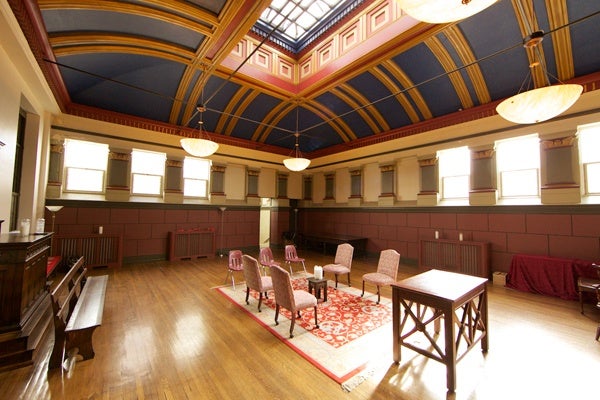
<p>In 1875, Furness and Hewitt designed the chapel and parish house next to the Church of St. Luke and the Epiphany on 13th Street in Center City Philadelphia. (Nathaniel Hamilton/for NewsWorks)</p>
-
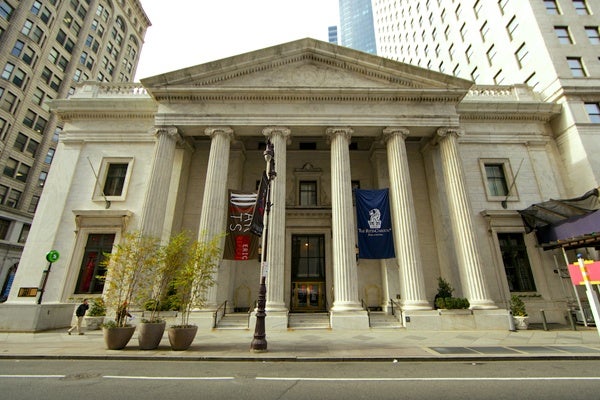
<p>The Girard Trust Company Building, at Broad and Chestnut streets in Philadelphia, was designed by Frank Furness but stolen and built by his partner Allen Evans in 1905. (Nathaniel Hamilton/for NewsWorks)</p>
-
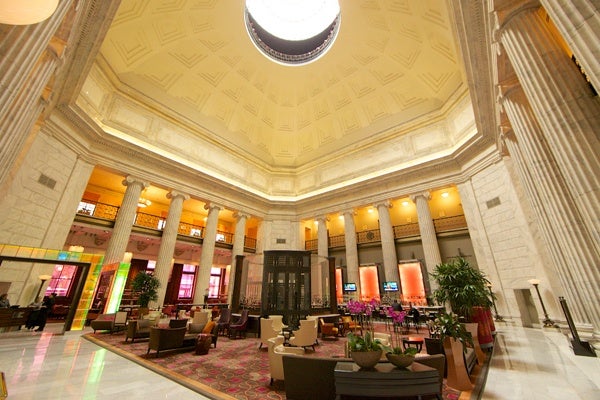
<p>For the Girard Trust Co. Building in Philadelphia, Furness adhered to his typical bank design with a tightly framed entrance opening into a vast hall lighted from above. (Nathaniel Hamilton/for NewsWorks)</p>
-
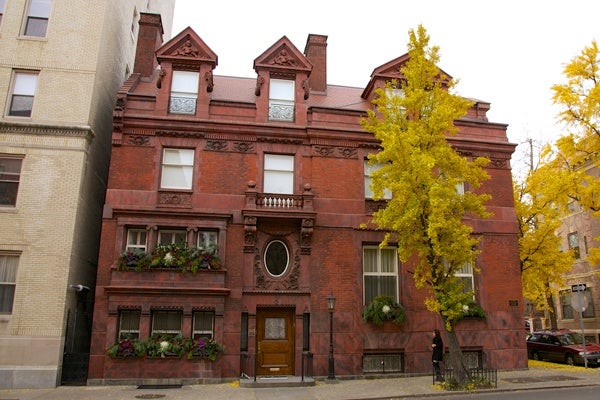
<p>The Horace Jayne House, designed by Frank Furness and Allen Evans, was built in 1895 on the corner of 19th and Delancey streets in Philadelphia. (Nathaniel Hamilton/for NewsWorks)</p>
-
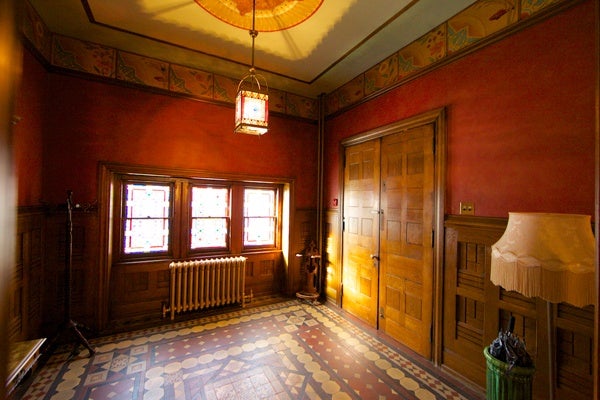
<p>The main entrance to the Knowlton Mansion in Fox Chase, Pa., still has its original stained-glass windows, also designed by Frank Furness. (Nathaniel Hamilton/for NewsWorks)</p>
-
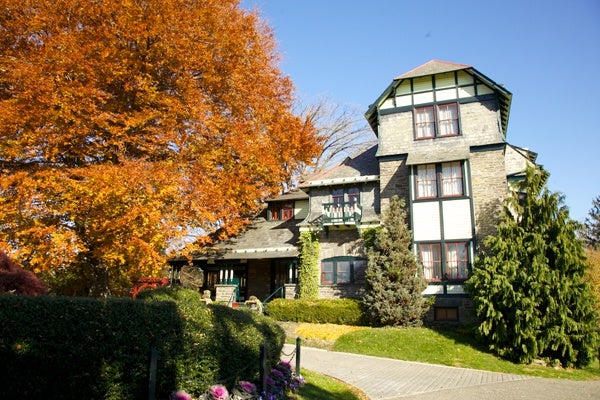
<p>Frank Furness designed the Knowlton Mansion in 1879 for the Rhawn Family. It was completed in 1881 at a cost of $32,636.16 — about $749,022 by today's standards. As architect, Furness earned $600 — or about $13,770 adjusted for inflation. (Nathaniel Hamilton/for NewsWorks)</p>
-
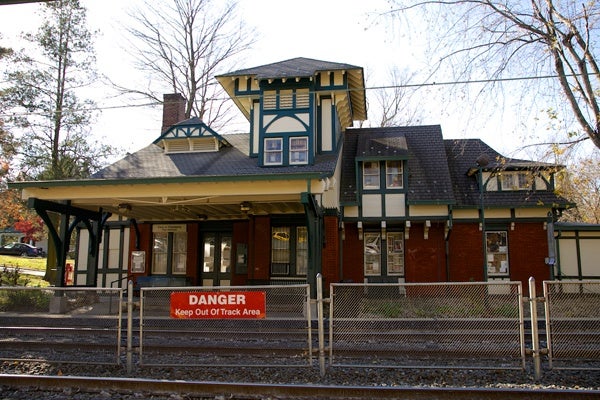
<p>Mount Airy Station, on the Chestnut Hill East Line, which once was part of the Philadelphia & Reading Railroad, was built in 1882, designed by Frank Furness. (Nathaniel Hamilton/for NewsWorks)</p>
-
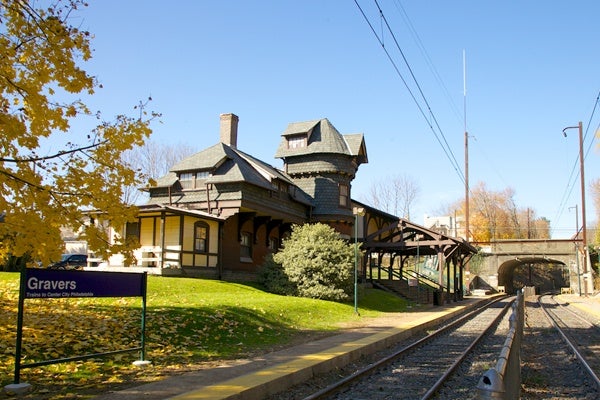
<p>Gravers Lane Station, located on the Chestnut Hill East Line, which once was part of the Philadelphia & Reading Railroad, was built in 1882, designed by Frank Furness. (Nathaniel Hamilton/for NewsWorks)</p>
-
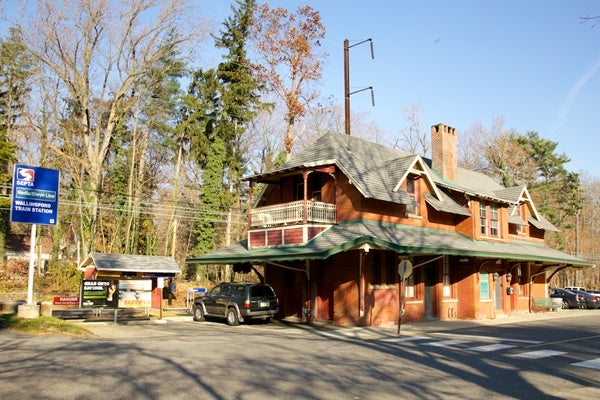
<p>The Wallingford train station, located on the Media/Elwyn SEPTA line, was built in 1890, designed by Frank Furness. (Nathaniel Hamilton/for NewsWorks)</p>
-
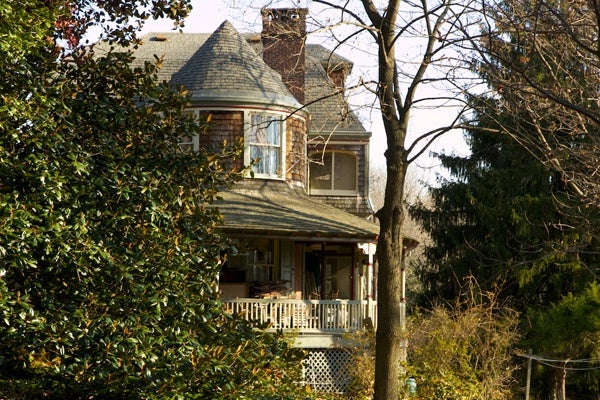
<p>Frank Furness' summer home, which he named "Idlewild," is located in Media, Pa. It was built in 1888. (Nathaniel Hamilton/for NewsWorks)</p>
-
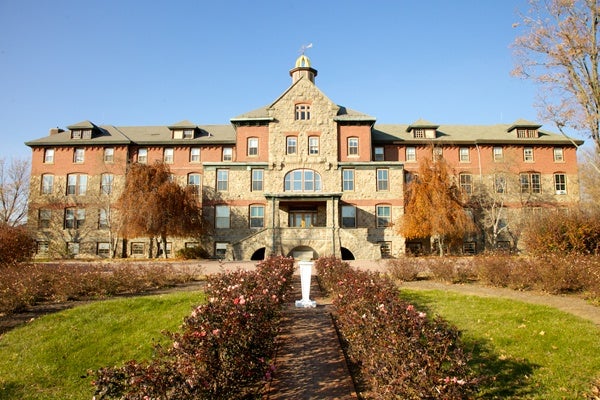
<p>On Dec. 1, 1888, Isaiah Williamson founded The Williamson Free School of Mechanical Trades. He employed Frank Furness to design the school, asking to keep it simple. (Nathaniel Hamilton/for NewsWorks)</p>
-
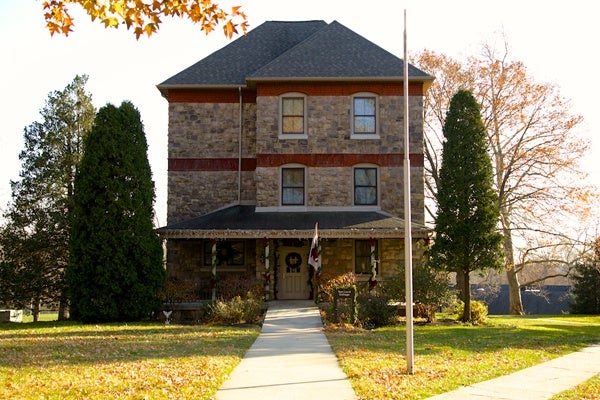
<p>This dormitory at the Williamson Free School of Mechanical Trades was designed by Frank Furness in 1889. (Nathaniel Hamilton/for NewsWorks)</p>
-
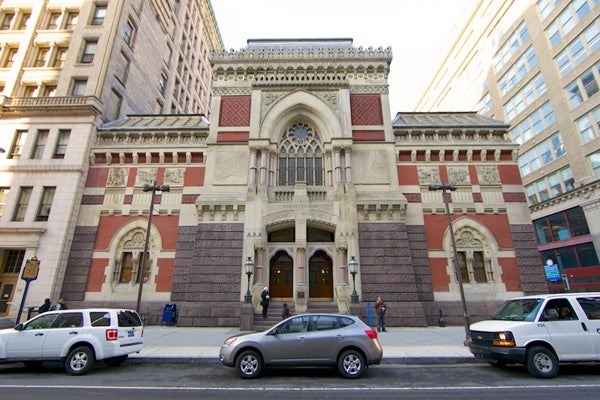
<p>The Furness-Hewitt building was built for the Pennsylvania Academy of Fine Arts on North Broad Street in Philadelphia. The building was completed on 1876. (Nathaniel Hamilton/for NewsWorks)</p>
-
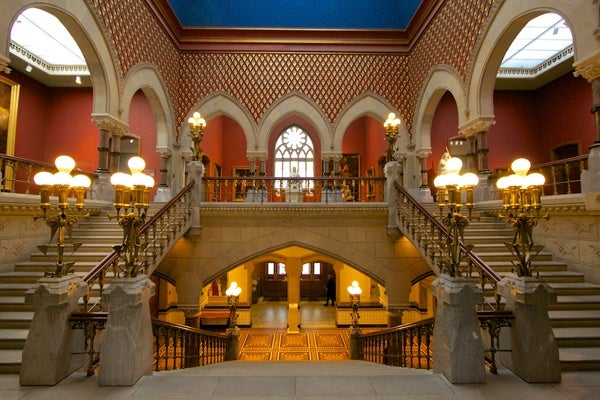
<p>The main staircase in The Furness-Hewitt building at the Pennsylvania Academy of Fine Arts. (Nathaniel Hamilton/for NewsWorks)</p>
-
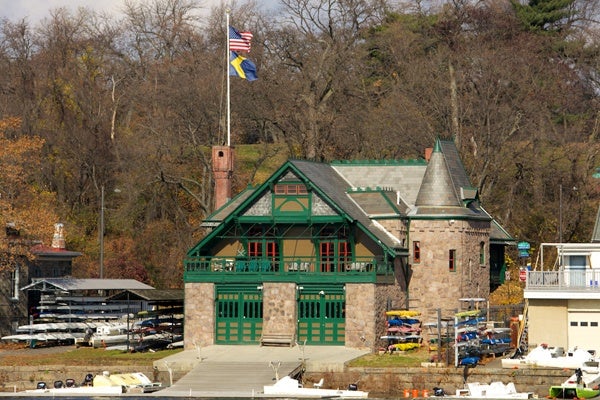
<p>The Undine Barge Club, founded in 1856 and located on the Schuylkill River, is another highly visible example of Frank Furness' work in Philadelphia. (Nathaniel Hamilton/for NewsWorks)</p>
-
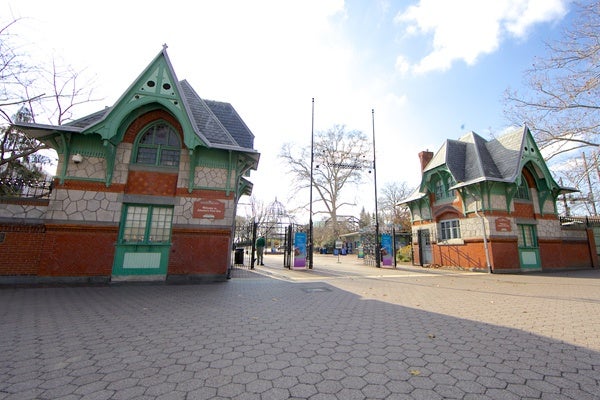
<p>The main entrance gate to the Philadelphia Zoo was designed by Frank Furness in 1875, one year after the zoo opened. It was the first zoo in the United States. (Nathaniel Hamilton/for NewsWorks)</p>
-
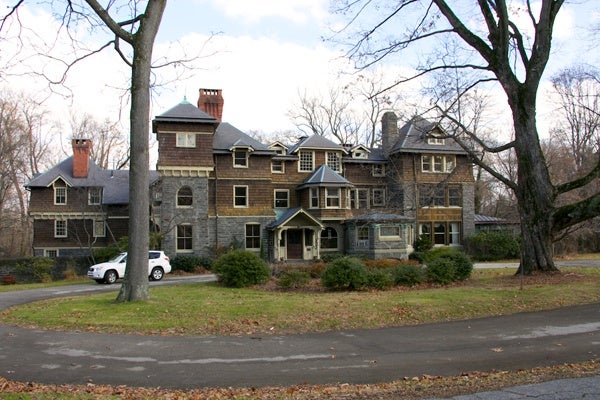
<p>The Clement Griscom House, located in Haverford, Pa., was designed by Frank Furness and Allen Evens. The residence, under near-constant construction from 1881 to 1895, encompasses Furness' architectural evolution. (Nathaniel Hamilton/for NewsWorks)</p>
-
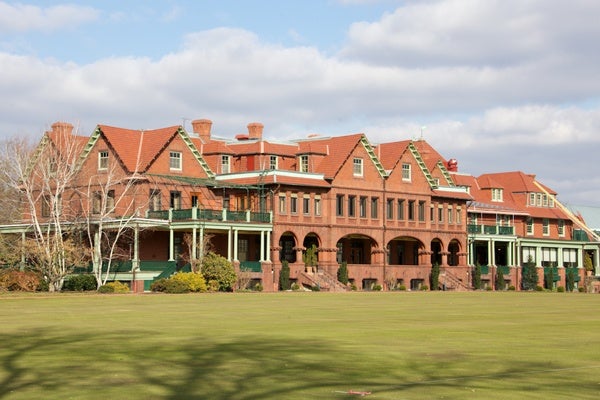
<p>The Merion Cricket Club, located in Haverford, Pa, is the sixth club house designed by Frank Furness and his business partner Allen Evans, who was one of the founders of the club in 1865. (Nathaniel Hamilton/for NewsWorks)</p>
-
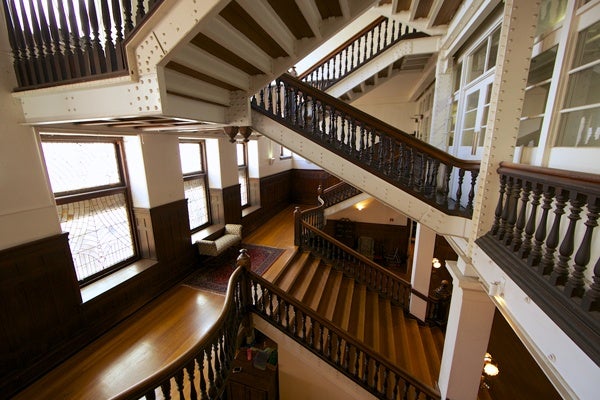
<p>Inside the Baldwin School, built in 1890, the main stairwell's exposed structural beams showcase Frank Furness' industrial style. (Nathaniel Hamilton/for NewsWorks)</p>
-
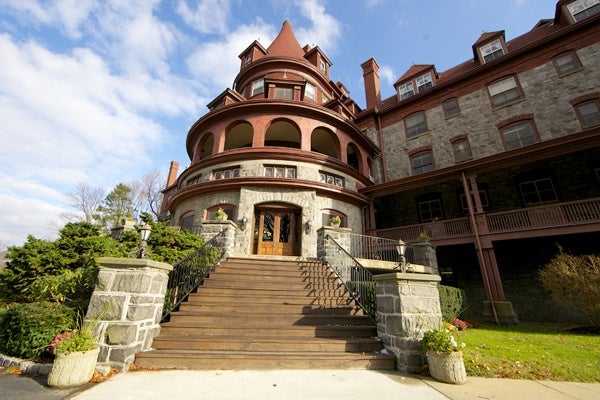
<p>The Bryn Mawr Hall Hotel, now the Baldwin School, located in Bryn Mawr, was designed by Frank Furness and Allen Evans in 1890. (Nathaniel Hamilton/for NewsWorks)</p>
The Athenaeum of Philadelphia is the repository of working drawings by the great 19th-century architect Frank Furness (pronounced “furnace”).
Currently it has something more whimsical on exhibition. Bulging eyes. Prolonged noses. Mouths twisted in grotesque grimaces.
“He had a great way of looking at your face and finding the couple distinctive features about your cheeks, forehead, or nose, and stretching them to the point where you are recognizable but making you look — frankly — ghastly,” said Michael Lewis, a professor of art history at Williams College.
Lewis curated “Face and Form: The Art and Caricature of Frank Furness,” a selection of drawings from Furness’ personal sketchbooks, most of which are privately held by his descendants and have never been seen publicly.
Throughout his long career as an architect, Furness constantly drew funny faces for his own amusement, often at the expense of friends, clients, and relatives who were the subjects of the drawings. The quick but deftly accomplished illustrations hang beside examples of his architectural work to show that an exaggerated chin and comically sloped forehead are echoed in the bold, expressive elements of his buildings.
“He was well on his way to being a leading figure in architecture, but something happened around the Centennial exhibit in Philadelphia, in 1876,” said Lewis. “American architecture began to turn cautious. Furness’ unchecked individualism began to seem vulgar and rude. He was always respected as a great creative artist, but, ‘children: don’t do this at home.'”
In the late 19th century, Philadelphia was full to bursting with Furness buildings. One of the few still remaining is the Pennsylvania Academy of the Fine Arts.
“What you’re looking at is industrial architecture,” said George Thomas, an architectural historian and author, standing beneath the rafters of the 1876 building on Broad Street. Furness used exposed steel girders in the exhibition hall and a roof on hinges that could flap open, releasing heat. All are markers of an iron works factory, not a fine art museum.
“The magic of these buildings is that big sheets of glass are held up with steel armature — these metal stays holding these trusses together,” said Thomas. “That is what Frank Furness and the engineers figured out.”
Forging a modern identity for Philadelphia
At a symposium this weekend at the Athenaeum (“Frank Furness: His City, His World”), Thomas will hypothesize that Furness’ engineering bravado caused him to be snubbed in important architectural circles of New York and Boston, but loved in Philly.
The heads of major organizations in most Eastern cities were usually bankers, and they wanted buildings that reflected their old-money tastes. On the other hand, Philadelphia was the workshop to the world. The heads of its civic organizations — the ones commissioning buildings — were people such as mechanical engineer William Sellers (president of the Franklin Institute), civil engineer Fairman Rogers (one of the founders of the Union League), and Dr. William Pepper (physician and founder of the Free Library of Philadelphia).
They hired Furness to design buildings for their businesses, their foundations, and their families.
“Philadelphia was run by engineers,” said Thomas. “All the leading institutions — including PAFA — had as their principal board members the scientists and industrial engineers who were creating the modern world. They aren’t afraid of this new stuff. Furness gave them an identity.”
Furness is said to have designed 1,000 buildings during his career. Few remain today. Many of his buildings in Philadelphia were demolished in the 1950s, before his proto-modernist style came back into fashion. Now, several Furness buildings in the region are in various states of conservation.
WHYY is your source for fact-based, in-depth journalism and information. As a nonprofit organization, we rely on financial support from readers like you. Please give today.

